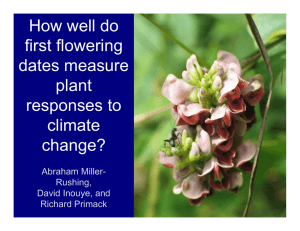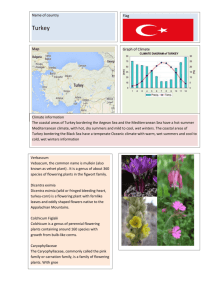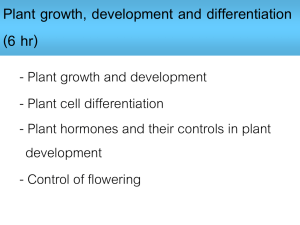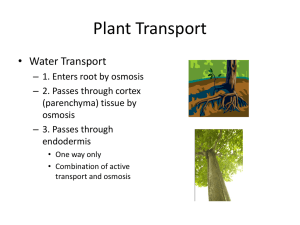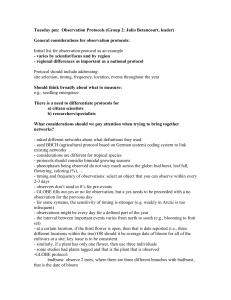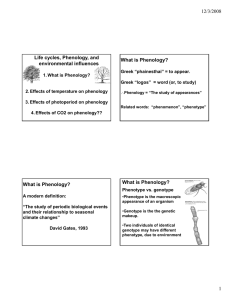National Phenology Network Workshop Science Breakout Native
advertisement
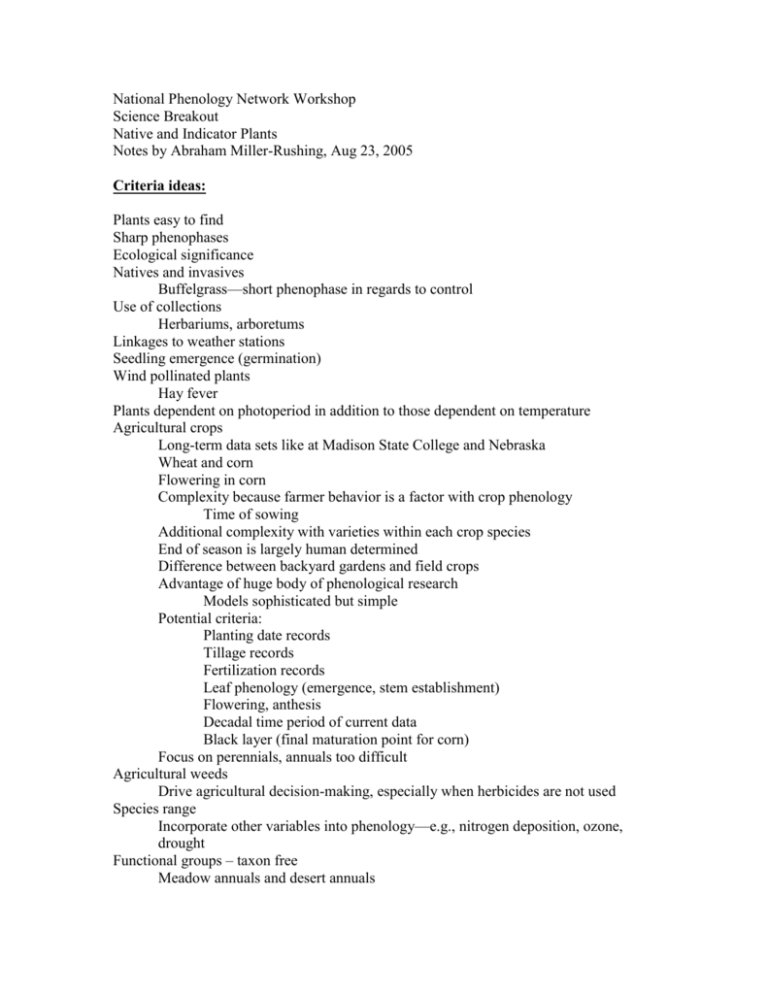
National Phenology Network Workshop Science Breakout Native and Indicator Plants Notes by Abraham Miller-Rushing, Aug 23, 2005 Criteria ideas: Plants easy to find Sharp phenophases Ecological significance Natives and invasives Buffelgrass—short phenophase in regards to control Use of collections Herbariums, arboretums Linkages to weather stations Seedling emergence (germination) Wind pollinated plants Hay fever Plants dependent on photoperiod in addition to those dependent on temperature Agricultural crops Long-term data sets like at Madison State College and Nebraska Wheat and corn Flowering in corn Complexity because farmer behavior is a factor with crop phenology Time of sowing Additional complexity with varieties within each crop species End of season is largely human determined Difference between backyard gardens and field crops Advantage of huge body of phenological research Models sophisticated but simple Potential criteria: Planting date records Tillage records Fertilization records Leaf phenology (emergence, stem establishment) Flowering, anthesis Decadal time period of current data Black layer (final maturation point for corn) Focus on perennials, annuals too difficult Agricultural weeds Drive agricultural decision-making, especially when herbicides are not used Species range Incorporate other variables into phenology—e.g., nitrogen deposition, ozone, drought Functional groups – taxon free Meadow annuals and desert annuals Riparian species – indicators of hydrology Pollination mechanism Fungal relationships Media potential Fall color Cherry tree flowering Lilac flowering Peach tree and other orchard crops flowering Pollen counts Sugar maple sap flow Norway maple Roadside species Species from long-term studies, not necessarily on short list of species LTREB and LTER SEEK database Maintain flexibility in species Tap into other monitoring groups Monarchs, birds Need for local species in addition to wide ranging species Collections—herbaria, photographs Opportunity for historical information Limitations—timing of collections Flowering, fruit, leafout, leaf drop Good fall foliage Is it hopeless? Color change, not drop (drop is affected by wind and rain) Genetic diversity, mating systems, selection Advantages of using species with extensive genetic manipulation to make phenophases very obvious Early flowering – for climate signal Wild species with horticultural cultivars Possible confusion Age of individual, lifespan Long lived may be better Species that will be here over long period of time Maybe not sugar maple Region specific species vs. wide ranging Local interests may vary, e.g., papaya in Hawaii Evolutionary/taxonomic representation Local / regional / national range for species Conspicuous flowers Grow in disturbed habitats (schools, suburban areas) Species that address specific hypotheses Are local species more sensitive to climate change? Are species more sensitive to climate at edges of range? Edible fruit Masting Pollen records Ecotones/edge of range Mountain slopes Short and tallgrass prairie in Great Plains Aquatic species Native species with wide ranges Clonal species Agricultural/horticultural species Weeds Potential species in the South: Bradford pear Short flowering period Wide range Ornamental Flowering dogwood Other potential species: Edible fruits Blueberries Weeds Box elder Ragweed CO2 gradients in cities Dandelions Milkweed Wild radish Fall color change Red maple Trembling aspen Bradford pear Cherries Other concerns: Scientific or public purposes Misidentification Focus on leaf fall for autumn end of growing season Avoid oaks, lilacs Look at Fraxinus, Bradford pears, Red maple Complications of other factors besides temperature Nitrogen, ozone Current models have problems with speed of development in warmer environment In addition to plants: Insect phenology also important Honeybees Butterflies Mosquitoes (bites) Aquatic invertebrates Outbreaks Root phenology Frogs Earthworms Method: Create grid and check criteria

